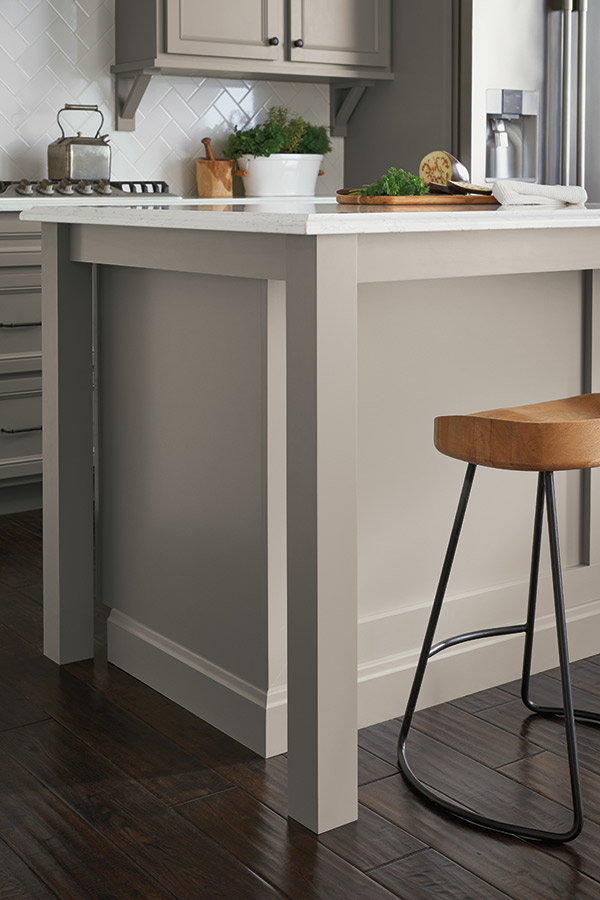Crucial Factors to Take Into Consideration When Picking Legs For Cooking Area Island
Choosing the suitable legs for a cooking area island involves a mindful assessment of several variables that can considerably affect both functionality and visual allure. As we explore these aspects, it comes to be clear that each decision can have significant effects for the overall kitchen area experience.
Product Options
When selecting legs for a kitchen area island, recognizing the various material choices is essential for accomplishing both visual allure and architectural integrity (Legs For Kitchen Island). The option of product dramatically influences not only the toughness of the island yet additionally its general design and performance
Timber is a preferred choice, providing warmth and adaptability. Strong woods, such as oak or maple, give strength and can be stained or painted to match the kitchen design. Metal legs, commonly made from stainless-steel or functioned iron, add a modern-day and commercial feeling while making certain resilience and stability. These materials are resistant to put on and can sustain significant weight, making them ideal for larger islands.
An additional choice is engineered materials, like MDF or plywood, which can be more cost-effective while still supplying a series of surfaces. Nevertheless, they may not give the very same level of stability as strong timber or metal. Finally, materials such as acrylic or glass can develop a contemporary look, though they might need additional assistance to guarantee stability.
Eventually, the selection of product for kitchen island legs need to line up with the desired capability and the general motif of the kitchen.
Design And Style
:max_bytes(150000):strip_icc()/pink-marble-tile_House-of-Harvee-9f030193ae38484a9cb7ea2d71af66f4.jpg)
When taking into consideration design, the form and coating of the legs are critical. Tapered legs can provide a sense of lightness and elegance, while thicker, more durable legs can share toughness and security. In addition, the coating-- be it repainted, discolored, or natural-- ought to complement the cabinetry and countertop products to develop a unified appearance.
Additionally, the style of the legs can also reflect individual preference. Custom-made or ornamental legs, such as those featuring intricate makings or special geometric shapes, can act as prime focus, including personality and personality to the cooking area. Eventually, the best choice will certainly not just improve functionality yet likewise elevate the visual charm, making the kitchen area island a standout feature of the home.
Elevation Considerations
Choosing the ideal height for kitchen island legs is critical, as it straight impacts both capability and comfort. The standard elevation for a kitchen island typically varies from 36 to 42 inches, aligning with usual counter top elevations. A 36-inch height is ideal for cooking and cooking, permitting comfortable use kitchen devices and tools. On the other hand, a height of 42 inches is commonly chosen for islands planned for bar seating, fitting taller stools and providing an informal dining experience.

It is likewise vital to represent individuals' choices and heights. Customizing the height can ensure a comfy experience for all member of the family, making the cooking area island a more enjoyable and functional room.
Weight Support
Making sure ample weight support for cooking area island legs is crucial for both security and capability. The check here kitchen island link frequently offers multiple purposes, consisting of food prep work, eating, and additional storage, demanding a robust assistance structure. When selecting legs, it is essential to take into consideration the overall weight capability called for based on the island's intended use and the materials that will certainly be positioned on it.
The selection of material for the legs plays a considerable function in their weight-bearing abilities. Solid wood, steel, and heavy-duty composites generally offer superior strength contrasted to lighter products. Furthermore, the style of the legs-- whether they are directly, tapered, or have a pedestal type-- can affect their capability to disperse weight successfully throughout the framework.
Always consult the supplier's specs regarding lots limits to make certain that the legs can sustain the designated weight without compromising security. In summary, picking kitchen area island legs with adequate weight support is important for creating a risk-free and functional cooking space.
Installment and Maintenance
Correct installation and maintenance of cooking area island legs are crucial for making certain longevity and security. To start, it is important to adhere to the manufacturer's guidelines during setup. This frequently involves safeguarding the legs to the space station utilizing suitable fasteners, making certain that the legs are degree and aligned. Using a degree tool can aid avoid wobbling and boost the overall visual appeal of the kitchen island.
Once installed, routine maintenance is necessary to maintain the integrity and appearance of the legs - Legs For Kitchen Island. For wooden legs, regular cleaning with a wet fabric and application of suitable timber gloss can avoid moisture damages and keep their surface. Steel legs may need a gentle cleaning remedy to remove oil and crud, complied with by a completely dry cloth to avoid corrosion formation
Additionally, examine the legs frequently for indications of wear or damage, such as cracks or loosened joints. Tightening up screws or bolts as needed can additionally extend the life expectancy of the legs. By adhering to these setup and maintenance practices, house owners can make sure that their kitchen island continues to be durable and visually appealing for years to come.
Final Thought

Aesthetic coherence is vital in selecting the design and style of legs for a cooking area island, as these aspects greatly influence the general atmosphere of the area. Tapered legs can offer a sense of lightness and elegance, while thicker, extra durable legs can share strength and security.Picking the ideal height for kitchen area island legs is essential, as it directly affects both capability and comfort. In summary, choosing kitchen area island legs with ample weight support is vital for producing a practical and risk-free culinary space.
In conclusion, selecting legs for a kitchen island demands mindful factor to consider of numerous variables, consisting of material options, style, elevation, weight assistance, and setup.